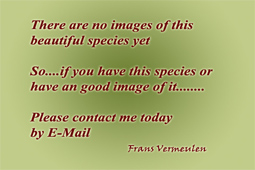History
The type locality of Austrofundulus limnaeus is located at the western border of the state Falcon, nortwestern Venezuela. Typematerial was found 15 KM west of San Felix approx. 71 25 W; 10 55 N.
The name <Limnaeus> refers to the origin these fishes live which are pools. Schultz described, also in 1949 A. transilis limnaeus and A. stagnalis, both species later seen as synonyme of A. limnaeus by Taphorn & Thomerson 1972.
In the recent revision from Hrbek, Taphorn & Thomerson 2005 the distribution of A. limnaeus is restricted to the eastern shores and connecting lowlands near Lake Maracaibo, Venezulela.
Diagnosis: This species is distinguished from all species of Austrofundulus by the
presence of iridescent blue-green spots present on its caudal peduncle and the basal portion of its caudal fin. This character is present in all sexually mature males. Intensity of the
iridescent spots varies along a north-to-south gradient.

Individuals from the northern coastal deserts occur in very turbid environments, and have corresponding more intense
iridescent colors, while individuals from more southern, less turbid habitats have less
intense colors.
The species is in the west replaced by A. guajira from the Colombian Guajira penninsula and far A. myersi from Sincelejo, Colombia. In the east- south- east by A. transilis (Venezuelan Llanos)and more far by A. rupununi in the savannah from southern Guyana.
Reproduction
All Austrofundulus become robust fishes that need a tank of at least 50 litres and where one male and 2 or more females are kept together. Males can be very aggressive to each other and females can be aggressive to each other to.
They eat a lot of food and grow rapidly as they do not have much time in the wild to live there live and produce there eggs. Because the habitats are mostly open and sunny, water temperatures can get 35 C during the day. Than lower to 25 C in the night. There courtship is very turbulent and if females are fed properly the number of eggs can become enormous.
Normally the Austrofundulus need to dive into the soft clay bottom and the layer of clay need at least have a thickness of there body length or more. However, without a soft layer of clay, or an substitute of peat moss they spawn eggs also on the substratum. As I collected in Colombia the A. aff. myersi and the A. guajira I was running out of proper plastic bags because I was not prepared to catch such massive killies and so much of them. Therefore I took some big garbage- bags to put the fishes in. These bags were stored under the bed in my hotel room and as I opened the bag to the daily change of water hundreds of eggs were spawned and fertilised inside the bags.
If you store the eggs in peat it is wise to add some Maërl or other pH neutralizing materials to it. Clay will also do . There eggs are sensitive to acid environments and normal peat can become to acid during the many months of storage. The use of well boiled coco- peat has proved to be the best medium so far to me. Development can be vary from 30 days to 12 months depending the way we store them.
I separated some eggs (about 20 in total) in a very wet peat and wetted them after 30 days. Three fry hatched, the others didn't show any development yet. For sure, you can speed up the development by storing the eggs at 30 degrees Celsius or even higher.
The fry need direct life artemia nauplii and if fed 2 times a day and change water once a week, they grow within 4 to 6 weeks to an stage they can produce there first eggs already. Austrofundulus is one of the very few South American genera that accept all type of food, even dry food en also frozen hart. Be careful with the fat that comes with the hart, you need to cut that of very secure as the fat will make these animals become sick after a while because it causes constipation.
They are beautiful and very special fishes that live a very short but interesting live.
Variations
It is sometimes very difficult to say to which species the one you see belongs to. Within each population the differences in colour are major, and species sometimes look very much the same. All females do not have much colour on the body and in there fins. Therefore keep good record of the origin of the species and give always the locality of your fishes to the person who gets them from you.
Map
Meristics
Max. size 8.0 cm.
Dorsal 14.5,
Anal 16.8,
D/A 6.0,
LL scale count (average)32.6
Pre- dorsal length to % SL – 67.2 %
Depth to % SL – 31.4 %
Literature
Schultz, L.P. 1949. A further contribution to the Ichthyology of Venezuela. Proceedings of the united States National Museum. 99 (3235) 85, fig. 10.
Hrbek T., D.C. Taphorn & J.E. Thomerson. 2005. Molecular phylogeny of Austrofundulus Myers (Cyprinodontiformes: Rivulidae), with revision of the genus and the description
of four new species. Zootaxa, 825:25, figs. 12-13. (PDF)